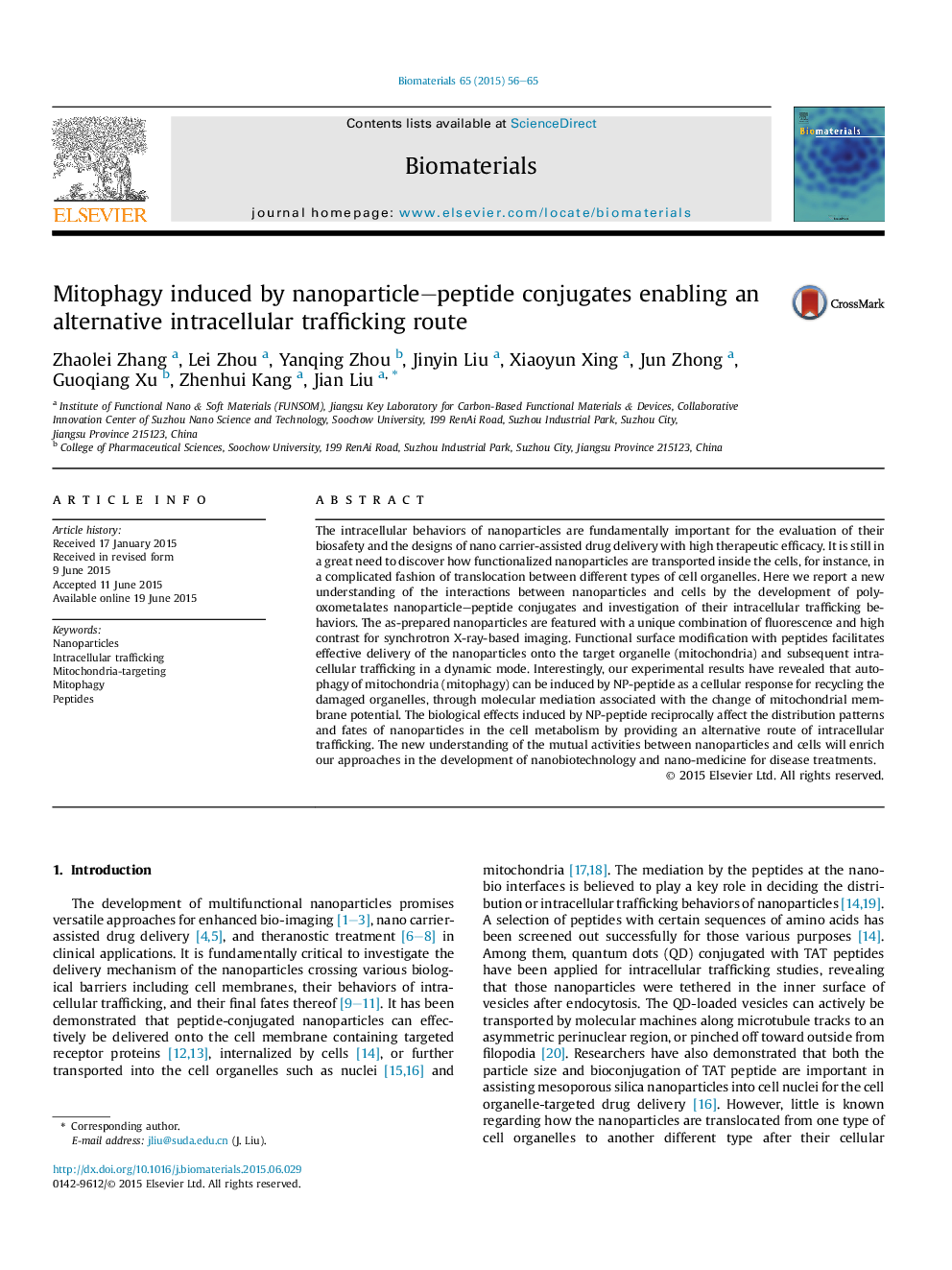| Article ID | Journal | Published Year | Pages | File Type |
|---|---|---|---|---|
| 5598 | Biomaterials | 2015 | 10 Pages |
The intracellular behaviors of nanoparticles are fundamentally important for the evaluation of their biosafety and the designs of nano carrier-assisted drug delivery with high therapeutic efficacy. It is still in a great need to discover how functionalized nanoparticles are transported inside the cells, for instance, in a complicated fashion of translocation between different types of cell organelles. Here we report a new understanding of the interactions between nanoparticles and cells by the development of polyoxometalates nanoparticle–peptide conjugates and investigation of their intracellular trafficking behaviors. The as-prepared nanoparticles are featured with a unique combination of fluorescence and high contrast for synchrotron X-ray-based imaging. Functional surface modification with peptides facilitates effective delivery of the nanoparticles onto the target organelle (mitochondria) and subsequent intracellular trafficking in a dynamic mode. Interestingly, our experimental results have revealed that autophagy of mitochondria (mitophagy) can be induced by NP-peptide as a cellular response for recycling the damaged organelles, through molecular mediation associated with the change of mitochondrial membrane potential. The biological effects induced by NP-peptide reciprocally affect the distribution patterns and fates of nanoparticles in the cell metabolism by providing an alternative route of intracellular trafficking. The new understanding of the mutual activities between nanoparticles and cells will enrich our approaches in the development of nanobiotechnology and nano-medicine for disease treatments.
